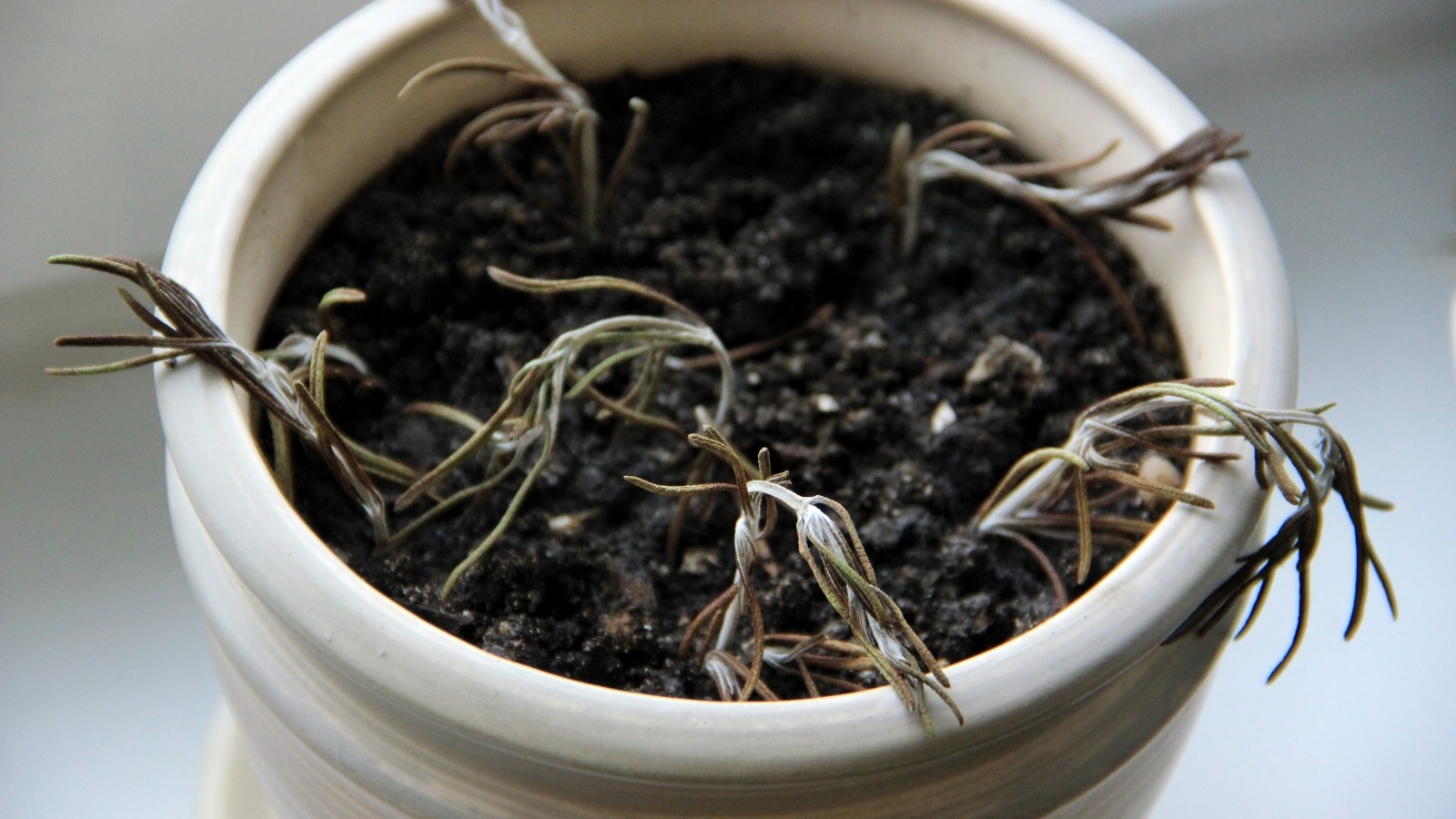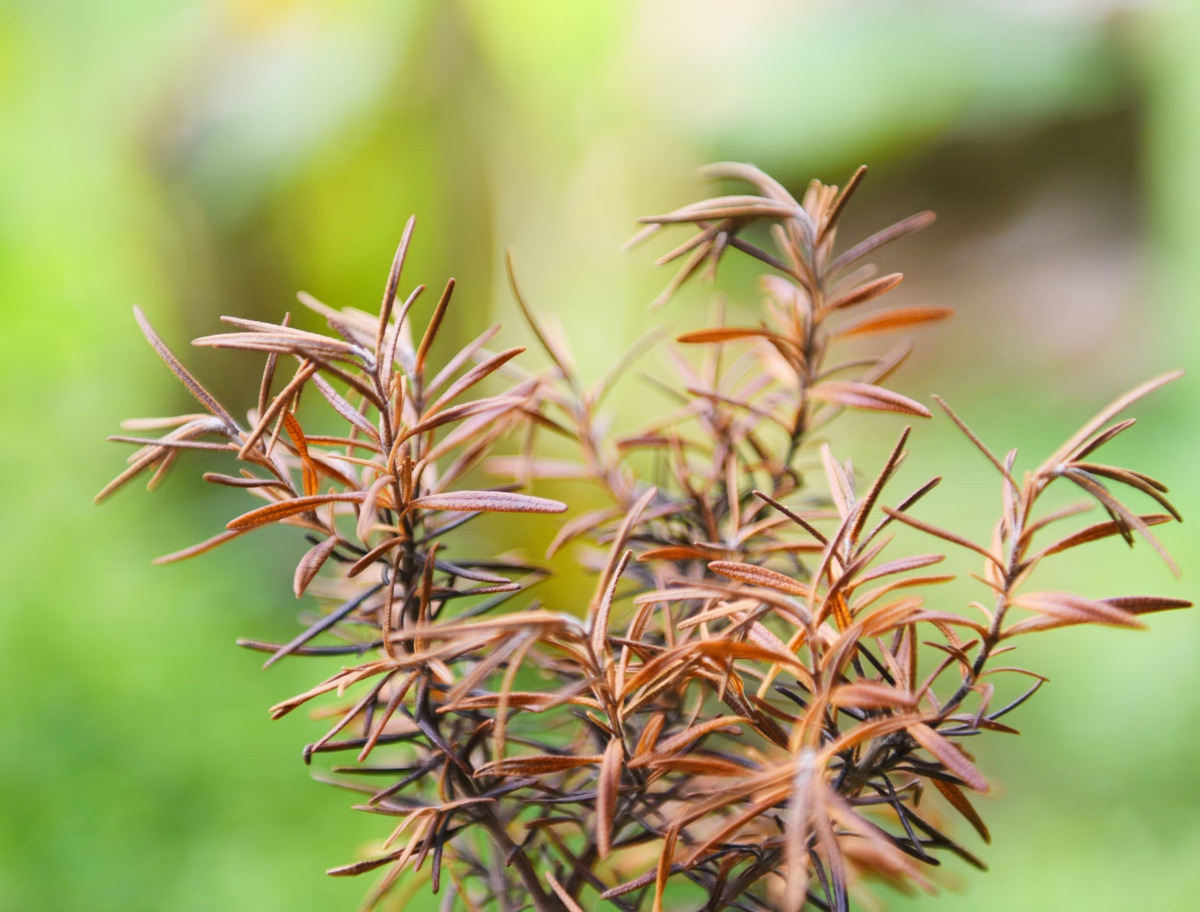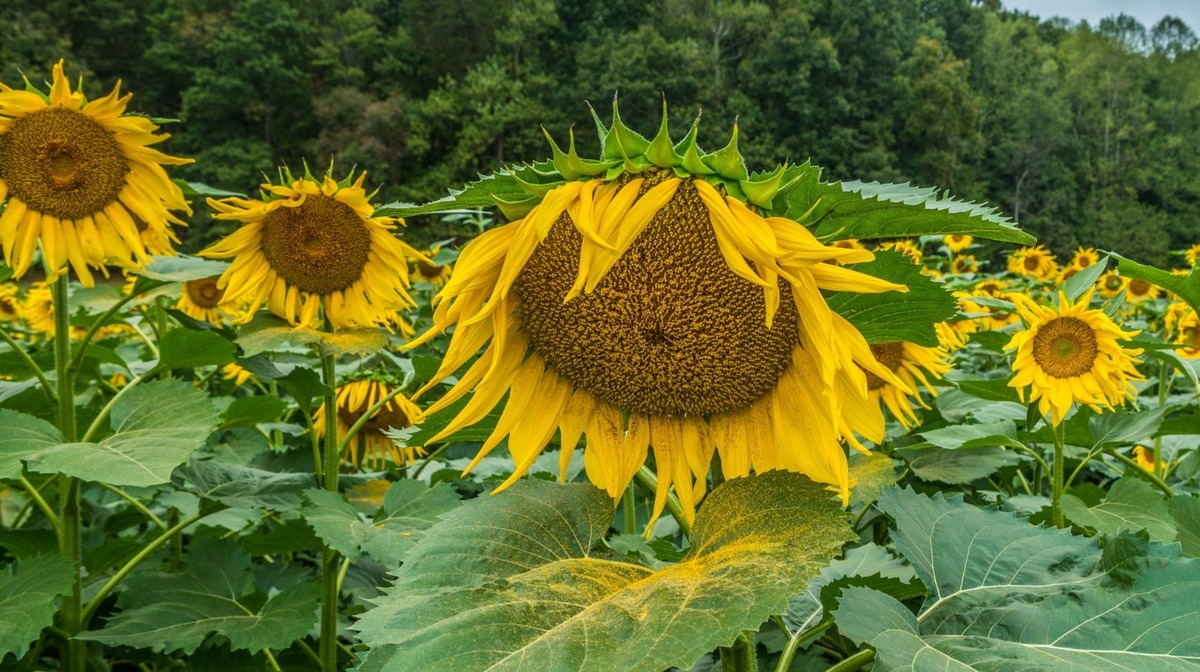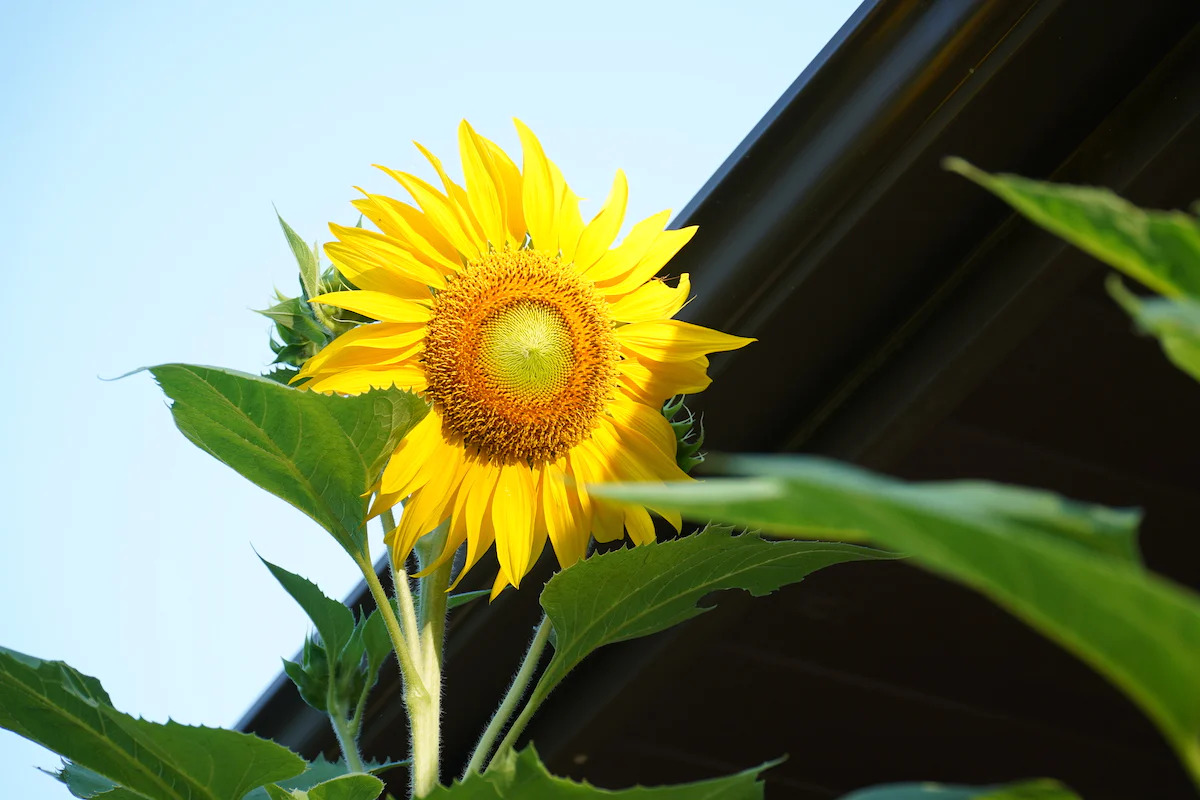Home>Types of Gardening>Ornamental Gardening>Why Are My Sunflowers Leaves Turning Yellow


Ornamental Gardening
Why Are My Sunflowers Leaves Turning Yellow
Modified: January 22, 2024
Discover the reasons behind your sunflower's yellow leaves in ornamental gardening. Learn how to address this issue and keep your plants healthy.
(Many of the links in this article redirect to a specific reviewed product. Your purchase of these products through affiliate links helps to generate commission for Chicagolandgardening.com, at no extra cost. Learn more)
Table of Contents
Introduction
Sunflowers are not only a stunning addition to any garden, but they also bring a sense of joy and radiance with their bright yellow blooms. However, if you notice that the leaves of your sunflowers are turning yellow, it can be quite concerning. After all, healthy green leaves are essential for photosynthesis, which is crucial for the overall growth and vitality of the plant.
Yellowing sunflower leaves can be a sign of various underlying issues such as overwatering, nutrient deficiencies, pests, diseases, and environmental factors. It is crucial to identify the root cause of the problem to effectively address it and help your sunflowers thrive.
In this article, we will explore the common causes of sunflower leaves turning yellow and provide tips on how to prevent and treat this issue. Whether you’re a beginner gardener or a seasoned green thumb, understanding the reasons behind this leaf discoloration will empower you to take appropriate action and restore the vibrancy of your sunflowers.
Common Causes of Yellowing Sunflower Leaves
When the lush green leaves of your sunflowers start displaying a yellow hue, it is essential to investigate the possible causes. Here are some of the common reasons why sunflower leaves may turn yellow:
- Overwatering: Sunflowers are relatively drought-tolerant plants and can suffer from overwatering. When the soil is consistently wet, it can lead to root rot, preventing the roots from absorbing nutrients properly. This can result in yellowing leaves.
- Underwatering: On the other hand, underwatering can also cause yellowing leaves in sunflowers. When they are deprived of adequate water, their leaves may turn yellow and become dry and brittle. It is crucial to maintain a balance and water your sunflowers appropriately.
- Nutrient deficiencies: Sunflowers require essential nutrients like nitrogen, phosphorus, and potassium for healthy growth. A deficiency in any of these nutrients can lead to yellowing leaves. For example, nitrogen deficiency often causes the older leaves to turn yellow first.
- Pests and diseases: Sunflowers can fall victim to various pests and diseases, such as aphids, caterpillars, powdery mildew, and rust. These can weaken the plant and cause yellowing and wilting of the leaves. Regular inspection and prompt treatment are necessary to protect your sunflowers from these issues.
- Environmental factors: Sunflowers thrive in sunny locations, but they can be negatively impacted by extreme weather conditions. Excessive heat, strong winds, or prolonged exposure to direct sunlight can cause the leaves to develop yellow patches or turn completely yellow.
By understanding these common causes, you can better evaluate the condition of your sunflowers and take appropriate steps to address the issue. In the following sections, we will discuss some preventive measures and treatments to help your sunflowers recover and regain their lush green foliage.
Overwatering
Overwatering is a common mistake that many gardeners make, and it can have detrimental effects on the health of sunflowers. When the soil is constantly saturated with water, it deprives the roots of oxygen and leads to root rot. This prevents the roots from absorbing nutrients properly, resulting in yellowing leaves.
To determine if overwatering is the cause of yellowing sunflower leaves, check the soil’s moisture level. Insert your finger about an inch into the soil. If the soil feels excessively wet and compact, it is a clear sign of overwatering. Additionally, if you notice signs of mold or a foul odor coming from the soil, it is a strong indication of root rot.
To address overwatering and revive your sunflowers, follow these steps:
- Adjust watering frequency: Reduce the frequency of watering to allow the soil to dry out between waterings. Sunflowers prefer slightly dry soil rather than constantly wet conditions.
- Improve soil drainage: If the soil in your garden retains too much water, consider incorporating organic matter such as compost or well-rotted manure to improve drainage. This will help prevent waterlogged conditions and reduce the risk of root rot.
- Water deeply, but less often: When you do water your sunflowers, ensure a thorough watering session that penetrates the soil deeply. This encourages the roots to grow deeper and promotes healthier plant development.
- Consider the weather: Adjust your watering schedule based on the weather conditions. During periods of rainfall or high humidity, reduce watering accordingly to prevent the soil from becoming overly saturated.
- Mulch the soil: Apply a layer of organic mulch around the base of your sunflowers. This helps regulate soil moisture, keeping it more consistently moist but not excessively wet.
By addressing overwatering and implementing these measures, you can restore the health of your sunflowers and prevent further yellowing of the leaves.
Underwatering
Underwatering can also contribute to yellowing sunflower leaves. When sunflowers are not given enough water, their leaves may turn yellow and become dry and brittle. It is crucial to find the right balance and provide adequate water to keep your sunflowers healthy and vibrant.
To determine if underwatering is the cause of yellowing leaves, check the soil’s moisture level. Insert your finger about an inch into the soil. If it feels dry and crumbly, it indicates that the sunflowers are not receiving enough water.
Here are some steps to address underwatering and revive your sunflowers:
- Water deeply: When you do water your sunflowers, ensure that you provide a thorough soak. Water deeply until you see the water seeping out from the drainage holes at the bottom of the pot or the ground. This will help penetrate the root zone adequately.
- Consistent watering: Establish a regular watering schedule, especially during dry spells or in hot weather. Sunflowers prefer evenly moist soil, so aim to water them consistently to prevent the soil from drying out completely.
- Observe the leaves: If your sunflower leaves are turning yellow and crispy, give them a gentle misting with water throughout the day to increase humidity around the plant. This can help alleviate dryness and prevent further yellowing.
- Mulch the soil: Applying a layer of organic mulch around the base of your sunflowers can help retain soil moisture. This will prevent the soil from drying out too quickly and provide a buffer against underwatering.
- Check for proper drainage: Ensure that the pots or the planting area have sufficient drainage. Poor drainage can lead to waterlogged conditions, causing root rot and yellowing of the leaves. If needed, consider adding drainage holes or using well-draining soil.
By giving your sunflowers the right amount of water and monitoring their moisture needs, you can help prevent yellowing of the leaves and promote healthy growth.
Nutrient Deficiencies
Nutrient deficiencies can significantly impact the health and appearance of sunflower leaves. Sunflowers require a balanced supply of essential nutrients, including nitrogen (N), phosphorus (P), and potassium (K), to thrive. A deficiency in any of these nutrients can manifest in yellowing leaves.
Identifying the specific nutrient deficiency responsible for yellowing sunflower leaves can be challenging. However, here are some common signs associated with nutrient deficiencies:
- Nitrogen deficiency: When sunflowers lack nitrogen, the older leaves often turn pale yellow or even white, while the veins retain their green color.
- Phosphorus deficiency: Phosphorus deficiency usually causes the leaves to take on a bronze or purple hue before turning yellow. The leaves may also appear small and deformed.
- Potassium deficiency: Yellowing and browning of leaf edges, often accompanied by brown spots or scorching, can indicate a potassium deficiency in sunflowers.
To address nutrient deficiencies and restore the health of your sunflowers, consider the following steps:
- Soil testing: Conduct a soil test to determine the nutrient levels and identify any specific deficiencies. This will help you create a targeted fertilizer plan to address the specific nutrient needs of your sunflowers.
- Fertilizing: Apply a well-balanced fertilizer formulated for flowering plants, with an emphasis on the lacking nutrient identified in the soil test. Follow the manufacturer’s instructions for proper application rates.
- Organic alternatives: Consider using organic fertilizers such as compost or well-rotted manure to provide a slow release of nutrients to your sunflowers without the risk of over-fertilization.
- Foliar feeding: In addition to soil fertilization, you can also provide a quick nutrient boost by foliar spraying. Use a diluted liquid fertilizer and spray it directly onto the leaves, ensuring complete coverage.
- Maintaining proper pH: Ensure that the soil pH is within the optimal range for sunflowers, which is typically slightly acidic to neutral (pH 6.0-7.5). Adjust the pH if necessary with the appropriate amendments.
Regular monitoring, soil testing, and proper nutrient management will help ensure that your sunflowers receive the necessary nutrients, preventing yellowing of the leaves and promoting healthy growth.
Pests and Diseases
Pests and diseases can wreak havoc on sunflowers and contribute to the yellowing of their leaves. Common pests that affect sunflowers include aphids, caterpillars, snails, and slugs. These pests feed on the leaves, causing them to wilt, turn yellow, or develop brown spots.
In addition to pests, sunflowers are also susceptible to various diseases such as powdery mildew, rust, and fungal infections. These diseases can weaken the plant, affecting leaf health and causing yellowing.
To address pest and disease issues and restore the health of your sunflowers, consider the following steps:
- Regular inspection: Monitor your sunflowers regularly and inspect the leaves, stems, and flowers for any signs of pests or diseases. Early detection allows for timely intervention and better chances of preventing widespread damage.
- Physical removal: If you spot any pests or signs of infestation, such as caterpillars or snails, remove them by handpicking or using natural pest control methods like traps or barriers.
- Organic pesticides: If the pest infestation becomes severe, consider using organic insecticides or pesticides specifically formulated for sunflowers. Use these products sparingly and strictly follow the instructions to minimize harm to beneficial insects and the environment.
- Fungal treatments: If your sunflowers are affected by fungal diseases like powdery mildew or rust, treat them with appropriate fungicides. Be sure to choose products labeled for use on sunflowers and follow the instructions carefully.
- Cultural practices: Practice good garden hygiene by removing dead plant debris, fallen leaves, and weeds. This helps eliminate potential breeding grounds and hiding places for pests and diseases.
- Adequate spacing: Properly space your sunflowers to ensure good air circulation, which can help prevent the development and spread of fungal diseases.
- Resistant varieties: Consider planting sunflower varieties that are known to be more resistant to common pests and diseases. These varieties are bred to withstand specific challenges, reducing the likelihood of significant damage.
By implementing these pest and disease management strategies, you can protect your sunflowers from damage, prevent yellowing of the leaves, and promote their overall health and well-being.
Environmental Factors
Environmental factors can play a significant role in the yellowing of sunflower leaves. Sunflowers thrive in full sun and prefer warm temperatures, but extreme environmental conditions can cause stress to the plants and lead to leaf discoloration.
Here are some environmental factors that can contribute to yellowing sunflower leaves:
- Excessive heat: Sunflowers are generally heat-tolerant, but prolonged exposure to extremely high temperatures can cause stress and result in yellowing or wilting of the leaves. Providing some shade during the hottest parts of the day or using mulch to insulate the soil can help protect the sunflowers from heat stress.
- Strong winds: Strong winds can damage sunflower leaves, causing them to dry out or break. This can lead to the yellowing of affected leaves. Planting sunflowers in a sheltered location or using supports, such as stakes or trellises, can help protect them from wind damage.
- Drought: Sunflowers are relatively drought-tolerant, but prolonged periods without adequate water can cause stress and lead to leaf yellowing. If the surrounding soil becomes too dry, the sunflower may redirect its resources to conserve water, resulting in the yellowing and dropping of leaves. Ensure consistent watering during dry spells to prevent drought stress.
- Excessive moisture: While sunflowers require regular watering, excessive moisture can lead to waterlogged soil and root rot. This can cause the sunflower leaves to turn yellow. Be mindful of the watering frequency and adjust it according to the specific moisture needs of your sunflowers.
- Improper soil pH: Sunflowers prefer slightly acidic to neutral soil pH (pH 6.0-7.5). If the soil pH is too alkaline or acidic, it can affect nutrient availability and lead to yellowing leaves. Conduct a soil test to determine the pH level and make necessary amendments to optimize the soil conditions for your sunflowers.
By understanding and addressing these environmental factors, you can help alleviate stress on your sunflowers and reduce the chances of yellowing leaves. Providing optimal growing conditions will promote healthy foliage and vibrant blooms.
How to Prevent and Treat Yellowing Sunflower Leaves
Preventing and treating yellowing sunflower leaves requires a combination of proactive measures and prompt action. Here are some tips to help you keep your sunflowers healthy and vibrant:
- Proper watering: Find the right balance when it comes to watering your sunflowers. Avoid both overwatering and underwatering by watering deeply and consistently, allowing the soil to dry out slightly between waterings.
- Nutrient management: Conduct soil tests to determine nutrient deficiencies and then fertilize accordingly. Use well-balanced fertilizers and consider organic alternatives like compost or manure to provide a slow release of nutrients over time.
- Pest and disease control: Regularly inspect your sunflowers for pests and diseases. Take immediate action to control infestations, using organic pest control methods whenever possible. Treat fungal diseases with appropriate fungicides labeled for sunflowers.
- Environmental considerations: Protect your sunflowers from extreme weather conditions by providing shade during intense heat, using mulch to insulate the soil, and providing support to prevent wind damage. Ensure optimal soil pH and avoid waterlogged conditions.
- Pruning and clean-up: Regularly remove any dead or yellowing leaves, as well as fallen debris and weeds around your sunflowers. This reduces the risk of pests and diseases and promotes better air circulation.
- Plant selection: Choose sunflower varieties that are known for their resistance to pests and diseases. These varieties are specifically bred to withstand common challenges, reducing the likelihood of yellowing leaves.
When treating yellowing sunflower leaves, it is crucial to address the underlying cause before applying a solution. By properly diagnosing the problem, you can take the appropriate measures to treat it effectively.
Remember, prevention is always better than reaction. By implementing good gardening practices, providing optimal growing conditions, and regularly monitoring the health of your sunflowers, you can prevent yellowing leaves and promote their overall vitality.
Conclusion
Yellowing sunflower leaves can be a cause for concern, but with proper understanding and proactive measures, you can successfully prevent and treat this issue. By addressing common causes such as overwatering, underwatering, nutrient deficiencies, pests, diseases, and environmental factors, you can restore the health and vibrancy of your sunflowers.
Remember to strike a balance with watering, providing adequate moisture without causing waterlogged conditions. Regularly monitor the nutrient levels of your soil and provide the necessary fertilizers to prevent deficiencies. Stay vigilant in inspecting your sunflowers for pests and diseases, and take immediate action to control these issues.
Consider the environmental factors in your garden and take steps to protect your sunflowers from extreme heat, strong winds, and other damaging conditions. Maintaining good garden hygiene, practicing proper pruning, and selecting resistant sunflower varieties will also contribute to preventing yellowing leaves.
By incorporating these preventive and treatment methods, you can enjoy the beauty and vibrancy of your sunflowers throughout the growing season. Remember to stay attentive and responsive to the needs of your sunflowers, adjusting your care practices as necessary. With your dedication and proper care, your sunflowers will thrive and bring joy to your garden year after year.









